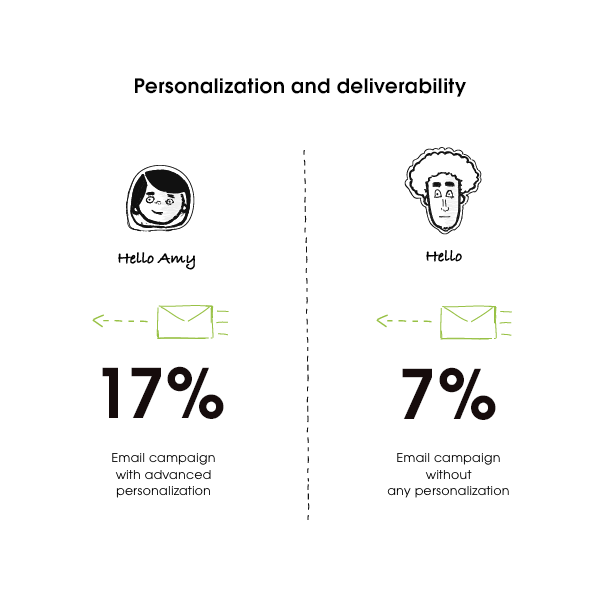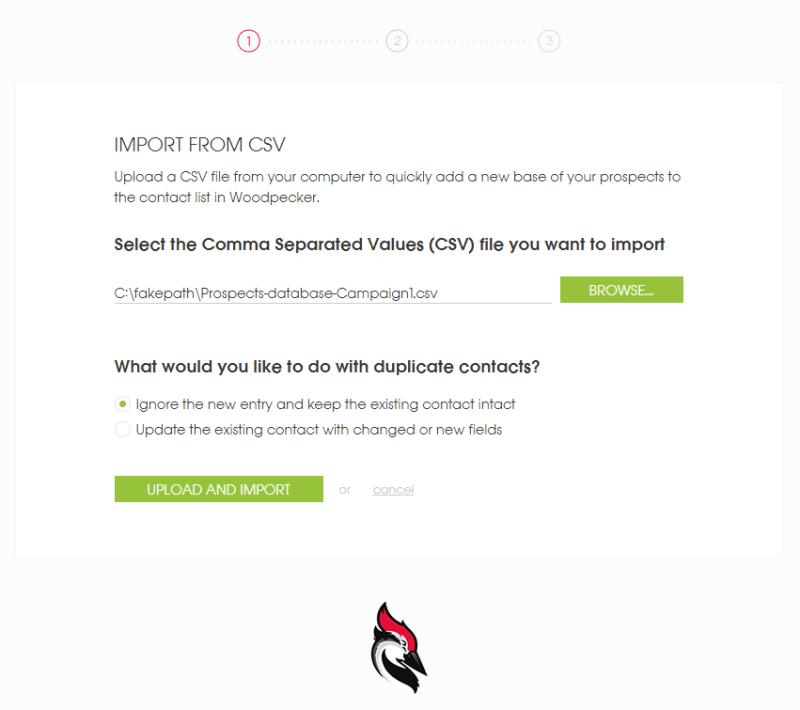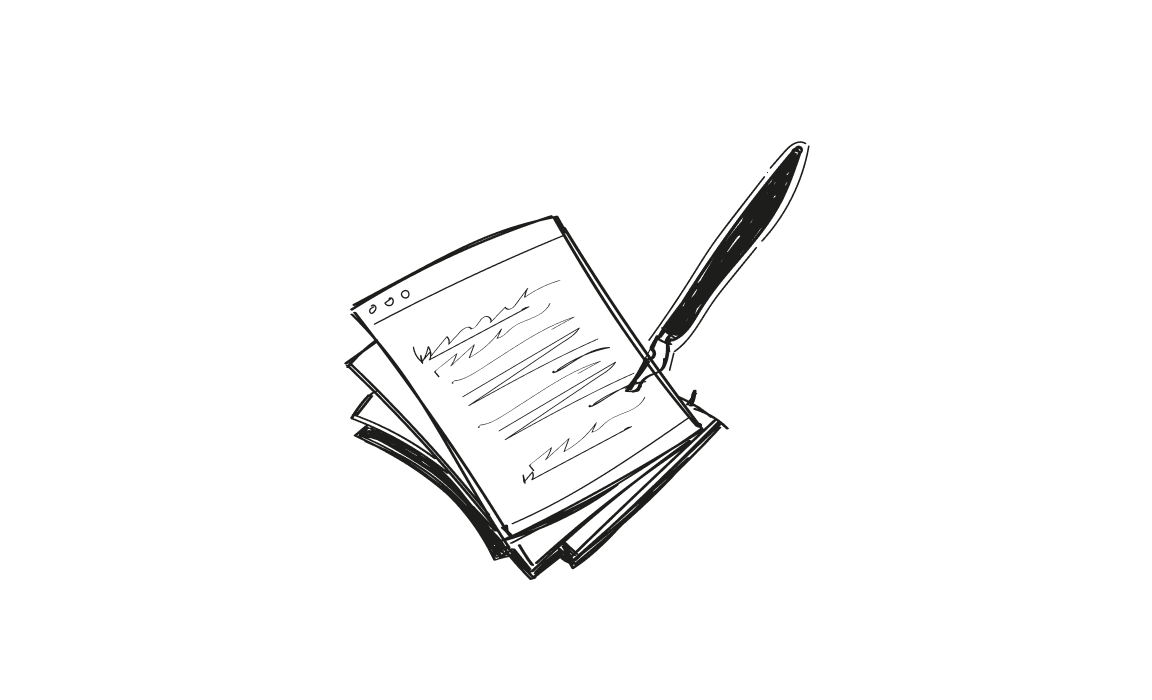Many cold emails used to have a short life: open, skim, delete. Sometimes, they don’t even make it past the spam folder. That’s what happens when the message looks like it was blasted to thousands of recipients at once.
Personalized cold emails can change that.
They feel like you’ve taken a moment to think about the person you’re writing to. A clever first line, a mention of their company name, maybe even a nod to their recent news or a project they’ve worked on. That’s the difference between “Really, another sales pitch” and “Hmm, this might be worth reading.”
But how do you approach personalization so it works for you, and not against you?
Here are some ideas.
Why personalization is a crucial factor in cold outreach
Imagine opening your inbox and seeing three sales emails in a row:
- The first one starts with “Dear Sir/Madam.”
- The second says, “Hope this email finds you well.”
- The third begins with, “Hey Alex, loved your recent article on the future of AI in healthcare — especially your take on real-time patient monitoring.”
Which one are you clicking on?
Exactly.
When you send generic emails, they blend into the noise. Or look so promotional that recipients don’t want to click them. Your audience has seen them a hundred times, and your response rates will reflect that. A personalized cold approach (even if it’s a small touch like referencing the recipient’s interests or a similar company they might know) shows you’ve done your homework. That’s the fastest way to move your email from “ignore” to “reply.”
Meanwhile, the gap between usual emails and personalized cold email campaigns is bigger than most people realize.
Recent data shows that advanced personalized cold emails — the kind with custom compliments, event mentions, or personalized images beyond — get an average response rate of 17%. Strip that personalization away, and you’re down to about 7%.
That’s more than double the replies lost just because the email looked like it could’ve gone to anyone.

Yet, it’s not just about getting replies.
Personalization affects your click-through rates, too. A cold emailer who tailors the opening line to match the reader’s needs will naturally get more clicks on a call-to-action. If the CTA promises valuable insights or a demo relevant to their buyer journey, people are more likely to act.
Then there’s email deliverability. Spam filters look for patterns. If your cold email outreach uses varied, human-sounding first lines instead of cookie-cutter intros, your messages are less likely to be flagged as spam emails. Over time, this protects your sender reputation and keeps you in front of potential clients.
The truth is, buyers in 2025 have zero patience for blanket sales outreach. They want messages that feel highly relevant, timely, and with a personal touch.
Miss that mark, and your competitors (the ones using hyper-personalized emails and personalized images) will get the meeting instead.
Building the perfect foundation before you write the first line
Before you even think about typing out your opening line, you need to stack the deck in your favor. That means research — the kind that uncovers what really matters to your audience.
Start with the basics. Look at their LinkedIn profile:
- What’s their role?
- Are they sharing recent news about their company name?
- Did they attend an event named that’s relevant to your pitch?
These details are gold for email personalization because they make your outreach instantly relatable.
Go deeper and check for shared interests you can weave into your personalized intro. Maybe you saw they spoke at a conference, published a guide, or partnered with a similar company. Mentioning that in your cold email templates shows you’re paying attention.
Then, use social proof to build credibility. If you’ve worked with industry leaders or leading companies in their sector, reference them. It’s an easy trust signal, and it makes your sales emails harder to dismiss.
Also, keep your leads in Google Sheets, a CRM, or a tool like Woodpecker that lets you import a CSV file and create emails with personalization fields built in. Organization matters, and dumping names and notes into random docs is a recipe for lost details. With Woodpecker, you will keep your contacts tidy, but also set yourself up for scalable lead generation.
One more tip? Segment your list before you start.
Group by industry, role, or buyer journey stage. That way, you can craft personalized messages that speak directly to their current priorities. It’s a lot easier to send effective personalized cold emails when you know exactly what’s on their mind.
Crafting an irresistible first impression
Your first line decides everything. If your opening line screams “mass email,” your prospects’ inboxes will spit it out faster than you can say “unsubscribe.”
The goal? Make them curious enough to read the second sentence.
That means thinking beyond {{first_name}} and {{company_name}} placeholders.
For example:
- “Loved your panel at [event name] — especially the part about reducing churn in SaaS.”
- “Congrats on your recent funding round. The new key features you launched are impressive.”
- “Your article on sustainable supply chains was spot-on. Loved how you tied it to real-world sales process challenges.”
See the pattern? Each personalized intro is highly relevant to that person’s world. It’s proof you’ve done the legwork.
Custom compliments go a long way, too. Saying “awesome work” only counts if you follow it up with specifics: “Awesome work on that customer portal — I saw you rolled out a multilingual option last month.” That kind of detail transforms a line from fluff into a genuine connection.
And yes, you can get this intel without it being time-consuming. Tools like Woodpecker let you store this info, then merge it into your cold email campaigns automatically. That way, every cold emailer on your team can keep the personal touch while scaling up outreach.
One caution: watch your spam emails triggers.
Words like “free,” “guarantee,” or “limited offer” in the subject line can sink your email deliverability. Also, stuffing too many links or capital letters can flag filters. If you want to stay out of the spam folder, keep it conversational and avoid anything that sounds like a late-night infomercial.
Adding depth with creative personalization
Good news: Personalization doesn’t stop at words. The best personalized cold emails use different assets.
- Consider using personalized images (compress them first) that feature your company name on a mock-up of your product dashboard.
- Or personalized videos where you address the recipient’s interests directly.
- Even hyper-personalized emails that change depending on the reader’s buyer journey stage can feel good.
Example: send valuable insights and a short case study about a similar company you’ve helped. If they’re close to buying, you offer a short, quick chat to discuss key features and next steps.
The secret is having personalized data ready. That means your CRM isn’t just a storage bin — it’s a goldmine. Tag contacts by last action, content they engaged with, or event name they attended. Then you can add personalization that feels natural and keeps response rates high.
Worried it’s too much work? Don’t worry – as we have said before, with Woodpecker, you can drop a CSV file full of these details and let the system insert the right information for each prospect.

Another trick? Tie your message to recent news or shared interests. Maybe their CEO spoke at a conference. Maybe their product was reviewed by industry leaders. Mention it in your opening line, then link it to how your solution fits their current momentum. That’s the kind of connection cold outreach tools can’t fake — unless you set them up to.
What people often forget when creating personalized emails
Yes, mistakes happen – it’s natural. Even experienced sales teams make bad moves that quietly kill their cold email campaigns. The problem isn’t usually the writing. Instead, it’s the strategy gaps.
Here’s what to watch for.
#1 Not tailoring to the buyer journey
Sending the same pitch to someone who’s never heard of you and to someone already comparing vendors? That’s a fast track to low click-through rates. Use segmentation so your outreach emails match their stage — awareness, consideration, or decision.
#2 Recycling the same cold email templates
Templates are fine, but if you send identical intros to a startup founder and a VP at a leading company, it shows. Adapt the tone, the first impression, and ask for the similar company size or industry you’re targeting.
#3 Ignoring engagement metrics
If you’re not tracking click-through rates, opens, and replies, you’re flying blind. These engagement metrics tell you if your personalized emails are hitting or missing. Without them, you can’t gain insights or adjust your sales outreach.
#4 Skipping the follow-up
One email isn’t enough. A good follow-up plan can double your chances of a reply. Keep it light — reference your previous opening line or mention a recent news update relevant to them. Don’t resend the same thing word-for-word.
#5 Not testing subject lines
The subject line is your gatekeeper. Testing variations can bump open rates significantly. Avoid clickbait and focus on curiosity, relevance, and clarity.
#6 Overlooking email deliverability
Your perfectly written message means nothing if it never lands in prospects’ inboxes. Keep an eye on email deliverability by avoiding spam email patterns, cleaning your list, and warming up domains.
#7 Poor timing
If you fail to schedule emails when your target audience is most active, you’re wasting opportunities. Test sending times by role or industry — a marketing manager may check emails early, while a CEO might be more responsive after lunch.
Spoiler alert: Woodpecker has a feature that can help with that.
#8 Forgetting the personal touch
Even at scale, there’s room for a personal touch. It could be a custom compliment, a reference to a shared interest, or tying your ask to a relevant event name. Without it, you’re back in the land of mass emails and low reply rates.
Following up without being annoying
Let’s stay with following up for a moment.
Sure, we know that inboxes are crowded, notifications are constant, and people get distracted. Your perfect personalized cold email might be opened, appreciated… and then buried under a dozen other tasks.
The trick is knowing how many follow-up emails to send and when.
A good rule of thumb is three to five follow-ups spread over 7–14 days.
But here’s the important part: don’t send the exact same thing again.
Every follow-up is a chance to add a new angle, a new piece of valuable insight, or a quick reminder tied to something the reader cares about.
A smart move is to turn mass emails into personalized emails by referencing past outreach.
For example:
- “Hey Sarah, I mentioned in my last note that we helped a similar company cut their onboarding time by 30%. Thought you might like to see the case study.”
- “Hi Ben, in my earlier email, I brought up your recent news about the product launch. Just wondering — how’s that going so far?”
It’s simple: acknowledge what you said before, and connect it to something new. This keeps your sales outreach feeling human and prevents your prospect from thinking, “Didn’t they already send me this?”
Your first impression matters in follow-ups, too. Start with a mention of a shared interest to show you’ve been paying attention. Something like, “Congrats on hitting 100k users — saw the announcement on LinkedIn!” feels personal and timely.
Timing is another factor. You should schedule your follow-up when your target audience is most likely to check their emails. As we already mentioned, test different options to hit the right moment.
And finally, keep your tone light. A quick chat invite works better than a hard sell in a follow-up. Instead of “Let’s schedule a demo immediately,” try “Would you be open to a short call to see if this fits?” — it’s less pressure and more conversation.
Measuring and improving your personalized cold outreach
Sending personalized cold emails without measuring and monitoring results? That’s a hard no.
Without tracking performance, it’s like throwing emails in the dark. You might hit something, but you won’t know how or why.
That’s why measuring your results is just as important as writing the message. Start with the basics:
- Response rates – The percentage of recipients who reply. High response rates mean your first lines, subject lines, and overall approach are resonating.
- Click-through rates – The percentage of recipients who click a link in your email. If this is low, your call-to-action or a unique insight might need work.
- Engagement metrics – These cover opens, clicks, and replies together. Tracking them over time shows patterns, like which personalized cold emails perform best by industry or buyer journey stage.
With the right setup, you can break down performance by target audience, company name, or even your personal tags.
Also, look beyond the numbers.
Even a “no thanks” can tell you something — maybe the recipient’s interests are in another area, or the timing was off? Collect these responses so you can spot trends and adjust your cold email templates accordingly.
The best part about tracking and improving is that it compounds.
Every cold email campaign you run teaches you something new about your potential clients, your messaging, and your market. Over a few months, those small tweaks add up to higher response rates, stronger email deliverability, and a healthier pipeline.
In other words: write, send, measure, adjust, repeat.
Tip: And if you really want to level up, use automation intelligently. With Woodpecker, you can set condition-based campaigns, detect interest levels, or run A/B tests to see which approach gets the best results.
Woodpecker – your co-pilot for effective personalized cold emails
Personalization can be your ticket to getting into prospects’ inboxes and staying there. And yes, it can take time. But here’s the thing: you don’t have to do every step manually.
That’s where Woodpecker comes in.
It’s built for cold email personalization without stripping out the human touch.

Every detail is there to help you send personalized cold emails that actually get read, replied to, and clicked — while keeping your messages far away from the spam folder.
One of our strongest points is how Woodpecker blends personalization and automation so they work together instead of against each other.
Examples:
- Want to reach someone in their morning window? Fill out their country, and your campaign automatically lands in their inbox at the right hour with Send in the prospect’s timezone.
- Need variety to sound natural? Use Spintax to rotate words in your subject lines, intros, and snippets so you don’t trigger filters or sound repetitive.
The Snippets feature is a game-changer.
These are dynamic fields you merge into your template to add context — like mentioning their company name, a recent news item, or a shared event name. And because Woodpecker won’t send the email if a snippet is blank, you avoid embarrassing “Hi [First_Name]” moments.

If you’re running one campaign for different types of prospects, snippet-based conditions let you split your audience into segments within the same flow. Pair that with the built-in AI email writer, and you can create a tailored copy in minutes, then tweak it to match your tone.
There’s also peace of mind. With domain blacklisting, you can avoid contacting addresses you’ve ruled out. Previews and test sends help you see your first line, custom compliments, and links exactly as your recipient will.
And because the platform is fully GDPR and CCPA compliant, plus ISO and CASA certified, you’re covered from a data protection standpoint.
Beyond personalization, there’s an entire toolkit to keep your cold email campaigns performing. Features like:
- free warm-up,
- inbox rotation,
- spam word checks,
- adaptive sending,
- and email service provider matching
help protect your email deliverability.
We are sure you already see that: Woodpecker gives you a solid, ready-to-use system. It’s not just for sending messages, which you can do even without the help of such tools.
Woodpecker means advantage. You’re sending the right message, to the right person, at the right time. And making sure it actually lands where it should.
Putting it all together for more deals and better replies
When done right, personalized cold emails show you’ve done your homework, speaking to real priorities, and making it easy for the other person to say, “Sure, let’s talk.”
That balance between personalization and smart automation is what keeps your outreach alive in prospects’ inboxes.
You can turn even a small cold email campaign into a steady source of more calls, more deals, and long-term relationships. Tools like Woodpecker make it easier to handle all the moving parts — from first lines to follow up sequences and deliverability checks — without losing the human touch.
The key is to treat each message like the start of a conversation, not a transaction.
Test, track your engagement metrics, learn from every reply, and keep refining.
Do that, and your personalized cold emails won’t just be opened — they’ll be remembered.

